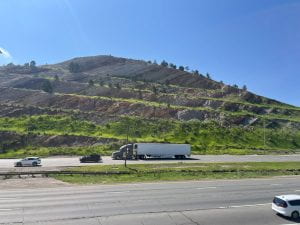
Day 3 in Colorado started a little earlier than the others with everyone loading into the cars for a longer drive to the front range of the Rocky Mountains. It was there, near the outskirts of Denver, where PhD Candidate, and Grad Student TA Audrey Putnam would lead us through a basic crash course on sedimentology. For our first stop we went to the T-Rex parking lot, not to look at dinos, but to see where I-70 cut through the Dakota Hogback formation. This physical feature consisted of beds of sedimentary material, from the Dakota and Morrison Formations, flipped on their side and eroded away at differing rates to make the shape we see. Although the cars passing by proved to be quite loud, I-70 provided us with a great vantage point to actually see all the defined layers of this sedimentary formation. While we also talked about how grain size in sedimentary rocks can influence the rate at which it erodes, mainly rocks with smaller grain sizes tend to erode faster.
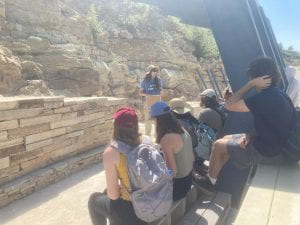
After that stop we made our way to the base of Dinosaur Ridge, a trail that goes up and over the Dakota Hogback, filled with, you guessed it, dinosaur remains. On our walk Audrey tasked us with thinking about what the information preserved in the rock could tell us about the environment these dinosaurs lived in. Early on in our walk we stopped to look at some fossilized dinosaur bones. While there, Audrey pointed out an example of cross bedding, angled layers of sedimentary deposits that cut across each other formed in changing fluvial systems. Here we also built upon Will Larsen’s previous lecture and talked about how grain size in the rock could tell us about the energy of a system.
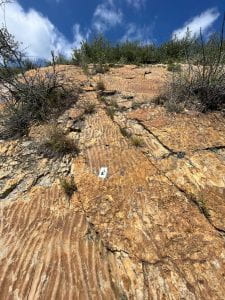
Moving further up the hogback we passed through millions of years of sedimentary rock, seeing more evidence of dinosaur activity and the changing environment. Rounding the corner to reach the other face of the ridge we saw ripples preserved in the rock. Based on the ripples’ size and orientation, Audrey said that this was evidence of the shallow sea that covered this region of Colorado during the time period. More evidence for life came in the form of Krotovina, filled in animal burrows that some of the TA’s were able to identify. This was particularly cool because graduate student Stewart Williams was actually able to piece together a broken off part of the Krotovina with where it originally sat, lining up the fossilized burrows with the indentations in the rock. Lastly, to finish the ridge walk we stopped at a bedding slope covered in dinosaur footprints, to admire the view.
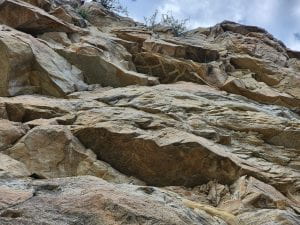
With the sun bearing down on us during the walk back we made a quick pit stop at the visitors center for some shade and lunch. Then we were off again, down the road, to look at more sedimentary bedding containing rock from the Permian period, where the largest mass extinction on Earth occurred. While looking at the rock we saw the sedimentary evidence for stromatolites, large bacterial mats that grew on the shoreline. The lack of animals during this time, due to the extinction, led to the preservation of stromatolites. While there, looking up we could also see filled-in mud cracks in the rock, more indicators of the environment that would have existed during this period.
For the last stop of the day we drove to Red Rocks, stopping right above the amphitheater there. After some negotiating with the park staff we were able to sidestep some construction to get a good look at the Great Unconformity. Fellow REU student Claire actually did a paper on this geological anomaly, so she led a discussion explaining the significance of this site. The Great Unconformity consisted of Idaho formation metamorphic rock, dated at 1700 mya, next to the Fountain formation, from 330 mya. This ~1.4 billion year gap in the rock record spans across much of the western US, and the conversation in our group turned to the different possibilities for this missing time. After looking at all the cool rocks and plenty of group photos the rain finally drove us back to our cars, where we would return to Minturn, ending our long day of sedimentology.
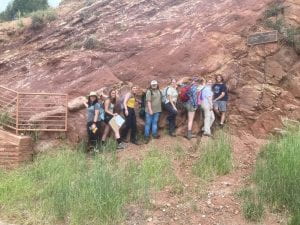
Written by Jacob Shiller